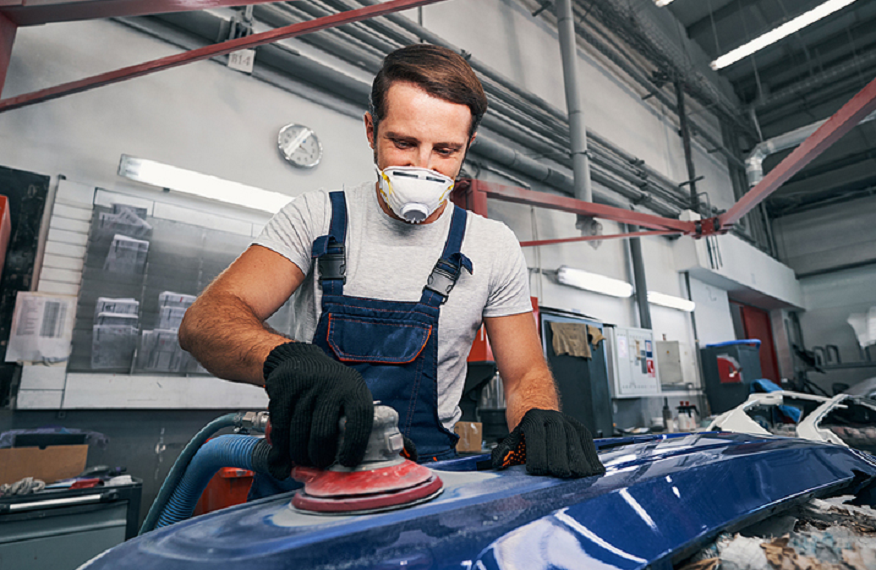In the ever-evolving landscape of automotive engineering, fiberglass has emerged as a fundamental material driving innovation and enhancing vehicular design. From sleek body panels to robust bumpers, the automotive industry has harnessed the unique properties of fiberglass to create vehicles that are lighter and possess an impressive degree of structural integrity.
Fiberglass is a composite material composed of fine glass fibers embedded within a resin matrix and offers an unparalleled strength-to-weight ratio, rendering it an ideal choice for crafting intricate and resilient components. However, even with the remarkable resilience of fiberglass, collisions can take a toll on these components, compromising their integrity and potentially jeopardizing the safety of passengers and drivers alike. This is where the imperative of restoring structural integrity after a collision comes into play. The repercussions of overlooking or inadequately addressing fiberglass damage can reverberate far beyond the cosmetic realm, impacting the overall performance and safety of the vehicle.
Why Professional Assessment Matters for Fiberglass Damage?
A professional assessment by a knowledgeable auto body technician ensures that all damage, both visible and concealed, is identified accurately. An experienced technician can ascertain the extent of cracks, fractures, and internal structural damage that might compromise the safety and functionality of the fiberglass components. Moreover, their expertise can prevent potential issues from arising in the future due to overlooked damage.
Types of Collisions and Fiberglass Vulnerability
Collisions come in various forms, each exerting a unique set of forces on vehicles and their components. Fiberglass, despite its durability, is not impervious to the effects of these collisions. Here are a few types of collisions that can potentially damage fiberglass components:
- Frontal Collisions: When a vehicle collides head-on with another object, the front-end components, including fiberglass bumpers and body panels, withstand most of the impact. These collisions can result in visible damage such as cracks, fractures, and deformations.
- Rear-End Collisions: Fiberglass rear bumpers and body panels are vulnerable to rear-end collisions. The force of impact can cause structural damage and compromise the integrity of these components.
- Side-Impact Collisions: Fiberglass panels along the sides of vehicles can suffer damage in side-impact collisions. The intrusion of another vehicle or object can lead to dents, cracks, and potentially hidden structural issues.
- Low-Speed Collisions: Even at low speeds, collisions can cause considerable damage to fiberglass components. For example, a minor fender bender can result in cracks and fractures in bumpers and panels.
Steps in Fiberglass Repair Process
These are the steps involved in repairing fiberglass damage in vehicles post-collision:
- Necessity of Cleaning the Damaged Area: Before any repair work can commence, thorough cleaning of the damaged area is imperative. Debris, contaminants, and loose fibers must be meticulously removed to ensure proper adhesion of repair materials.
- Sanding and Smoothing: Once the area is clean, sanding is employed to smoothen the damaged surface and create an ideal texture for subsequent repair layers. Gradually progressing from coarse to finer grit sandpaper, this step not only aids in achieving a seamless finish but also promotes better resin adhesion.
- Identifying and Assessing Cracks: Several types of cracks, from surface cracks to deeper fractures, require varying repair approaches. Accurate identification and assessment of the extent and nature of the cracks dictate the repair method to be employed.
- Filling, Bonding, and Reinforcing: Minor cracks can be addressed through filling with specialized epoxy fillers. For more substantial fractures, bonding techniques involving epoxy resin can be used. Reinforcing cracked areas with fiberglass cloth and epoxy resin creates a sturdy and durable repair.
- Use of Molds and Braces: Restoring the original shape and strength of a component might involve using molds or braces. These tools hold the damaged area in the desired shape as epoxy resin and fiberglass layers are applied, ensuring accurate reconstruction.
- Layering Fiberglass Sheets with Resin: Layering fiberglass sheets with epoxy resin is a strategic approach to rebuilding structural integrity. As each layer cures, it contributes to the component’s overall strength, effectively reinstating its original capabilities.
- Applying Finishing Layers: Once the structural repairs are complete, finishing layers are added to create a smooth and paint-ready surface. These layers consist of epoxy resin mixed with microspheres to achieve a consistent texture.
- Sanding, Priming, and Painting: Sanding the finished surface ensures that imperfections are smoothed out, readying the component for priming and painting. Priming promotes paint adhesion and enhances aesthetic appeal, while paint application not only restores the component’s visual appeal but also provides protection against external elements.
Thus, the innovations in automotive repair have contributed to a higher quality of repairs and helped in efficient processes. Additionally, by aligning with professional repair services and staying in touch with new and emerging trends, we are ensuring a future where the safety of the driver remains paramount and uncompromised.

